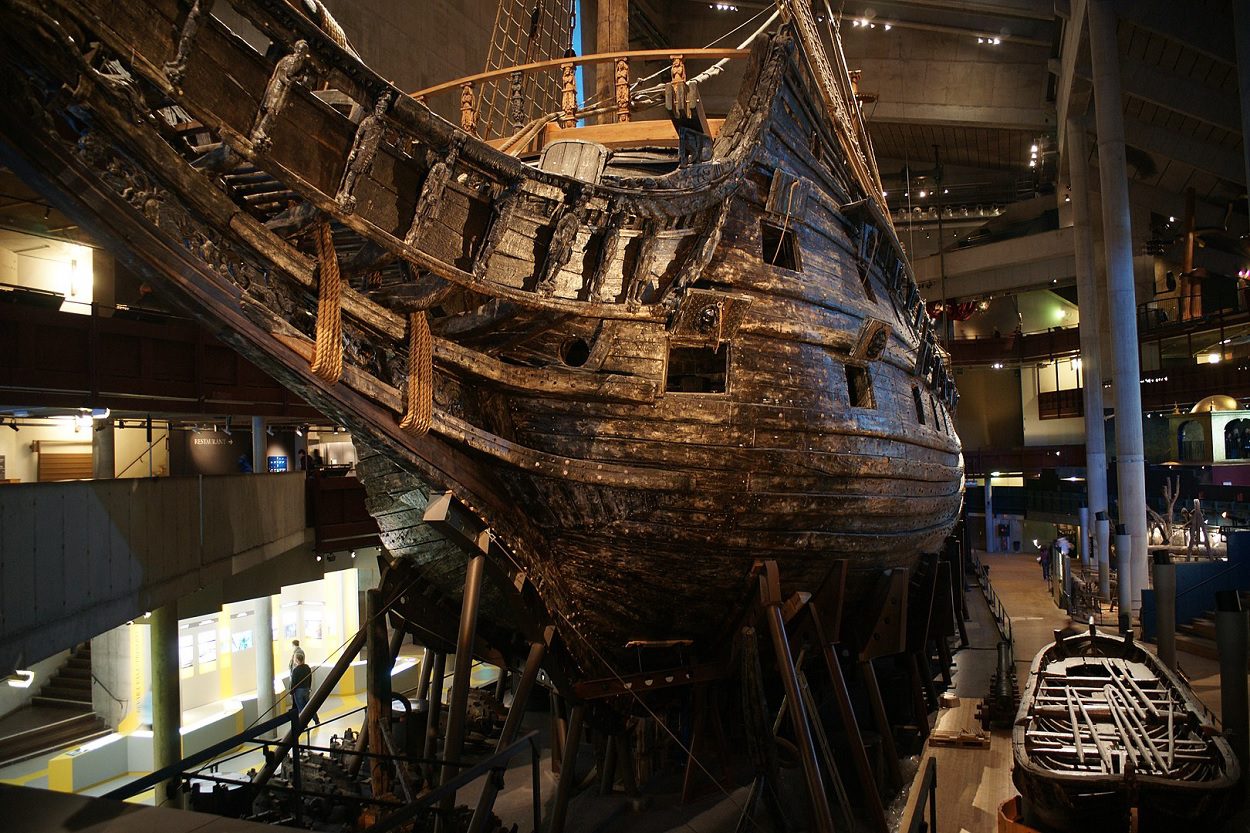The investigation of human remains found on the warship Vasa, initially identified the skeleton labelled as “G” as that of a man. However, recent research reveals that the skeleton actually belonged to a woman.
The Vasa was a Swedish warship, commissioned by the King of Sweden, Gustavus Adolphus, as part of his military expansion during the war with Poland-Lithuania (1621-1629).
It was built at the navy yard in Stockholm between 1626 and 1627 and was adorned with lavish decorations and bronze cannons, making the ship one of the most powerfully armed vessels in the world at the time.
On the 10th of August 1628, the ship set sail on her maiden voyage, however, the ship was dangerously unstable with too much weight in the upper structure of the hull, causing the ship to sink killing thirty of her crew.
Following the raising of the ship in 1961, it was the scene of a comprehensive archaeological excavation, in which numerous human bones were found on board and examined.
“Through an osteological analysis it has been possible to discover a great deal about these people, such as their age, height and medical history. Osteologists recently suspected that G could be female, on the basis of the pelvis. DNA analysis can reveal even more”, says Dr Fred Hocker, director of research at the Vasa Museum, in Stockholm, Sweden.
The Vasa Museum has been partnering with the Department of Immunology, Genetics, and Pathology at Uppsala University in Sweden since 2004, to conduct a comprehensive study of all the remains discovered on the Vasa ship.

“For us, it is both interesting and challenging to study the skeletons from Vasa. It is very difficult to extract DNA from bone which has been on the bottom of the sea for 333 years, but not impossible”, said Marie Allen, professor of forensic genetics.
“Already some years ago we had indications that skeleton G was not a man but a woman. Simply put, we found no Y-chromosomes in G’s genetic material. But we could not be certain and wanted to confirm the result”, added Allen.
Thanks to an interlaboratory study conducted with Dr. Kimberly Andreaggi from the Armed Forces DNA Identification Laboratory (AFMES-AFDIL), the team have devised a novel testing technique for the examination of numerous genetic variations.
“We took new samples from bones for which we had specific questions. AFMES-AFDIL has now analysed the samples, and we have been able to confirm that G was a woman, thanks to the new test”, says Marie Allen.
Marie Allen and Kimberly Andreaggi view the examination of the Vasa skeletons as an opportunity to advance their forensic techniques, which can subsequently be applied to analyse DNA in criminal inquiries or to identify deceased military personnel.
Dr. Anna Maria Forssberg, historian and researcher at the museum, explains: “We want to come as close to these people as we can. We have known that there were women on board Vasa when it sank, and now we have received confirmation that they are among the remains. I am currently researching the wives of seamen, so for me this is especially exciting, since they are often forgotten even though they played an important role for the navy“.
Additional findings are anticipated soon from the fresh samples. Marie Allen and Kimberly Andreaggi will be able to provide insights into the physical appearance of the individuals, such as the colour of their hair and eyes, and potentially even their familial origins.
“Today we can extract much more information from historic DNA than we could earlier and methods are being continuously refined. We can say if a person was predisposed to certain illnesses, or even very small details, such as if they had freckles and wet or dry ear wax”, says Marie Allen.
The Vasa Museum’s researchers are currently studying the skeletons from several perspectives, including the personal possessions found with them. Eventually the results will be presented in an exhibition at the museum and a book about the people who died on board Vasa.
Header Image Credit : JavierKohen – CC BY-SA 3.0





